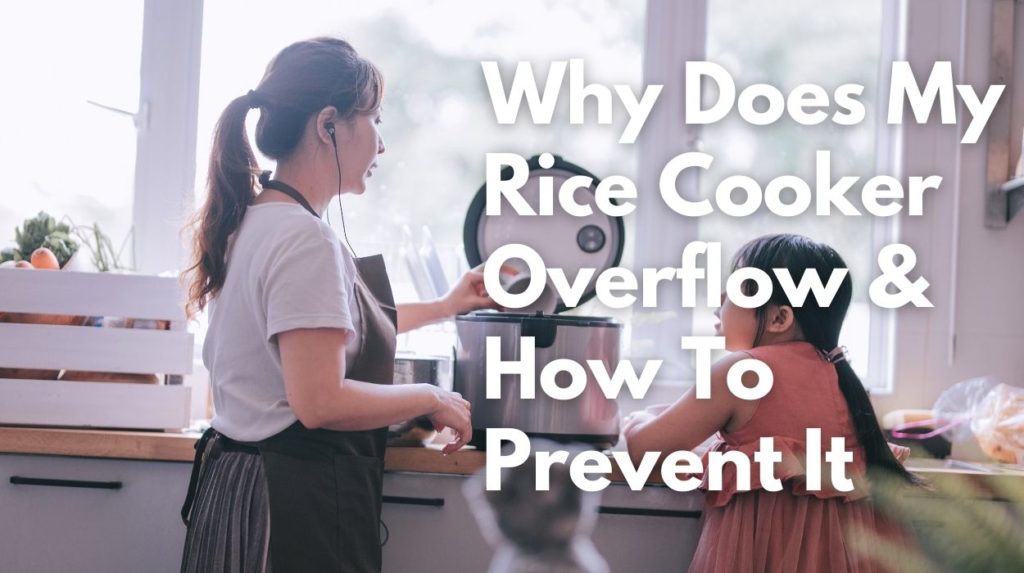
Operating a rice cooker is not rocket science, but one might face a few difficulties in the initial phases. The most common problem that people encounter is overflowing. The bubbling and foaming might create a mess on your kitchen counter.
Generally, the rice cooker overflows due to the presence of starchy rice. These bubbles eventually spill over once they reach the top of the rice cooker.
But you can avoid such situations with a few tips and tricks. Wondering how? Read along and find the best ways to prevent your rice cooker from overflowing.
How Do Rice Cookers Operate?

A rice cooker is an electrical appliance that is used for cooking rice. It typically consists of three parts – a pot, a heating element, and a thermostat.
The pot is where the rice and water are placed. The heating element is responsible for generating heat to cook the rice. The thermostat monitors the temperature inside the pot and turns the heating element on and off to maintain a constant cooking temperature.
Rice is cooked in boiling water, which breaks down the starch in the rice and makes it soften. When all the water is absorbed by the rice or evaporated, the temperature inside the pot will start to rise.
The thermostat will sense this and turn off the heating element. At this point, the rice is cooked, and the rice cooker will switch to ‘keep warm’ mode.
What Produces The Bubbles In A Rice Cooker?
Yes, it is perfectly normal for your rice cooker to produce bubbles and foam when you’re cooking starchy rice in it. This happens because the starch in the rice mixes with the boiling water inside the pot to form foamy bubbles.
These bubbles eventually spill over once they reach the top of the pot. So, if you see your rice cooker overflowing, don’t be alarmed – this is perfectly normal behavior.
How To Stop A Rice Cooker From Bubbling?
There are 10 things you can do to prevent your rice cooker from bubbling over:
1. Use rice with less starch
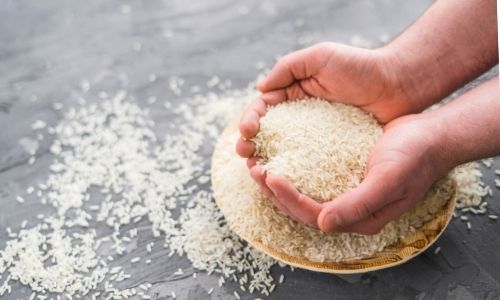
If you’re using rice high in starch, it is more likely to foam and bubble over. So, try using rice with less starch. For example, sushi rice or basmati rice has less starch than other types of rice.
You can also try using rice that has been milled or polished to remove the outer layer of bran, which is where most of the starch is located.
Note: We don’t recommend using pre-cooked or instant rice, as these have even less starch and are more likely to turn out mushy.
2. Wash the rice well before cooking
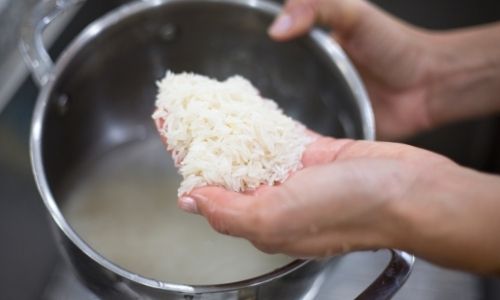
If you don’t wash the rice properly, the starch on the surface of the grains will mix with the water and form bubbles. So, make sure to wash the rice well before cooking. You can also rinse it a few times to remove any excess starch.
Ensure you don’t use too much water, as this can make the rice mushy. We recommend you use a 1:1 ratio of rice to water. Washing rice before cooking will also remove any impurities or dirt that may be present.
3. Soak the rice before cooking
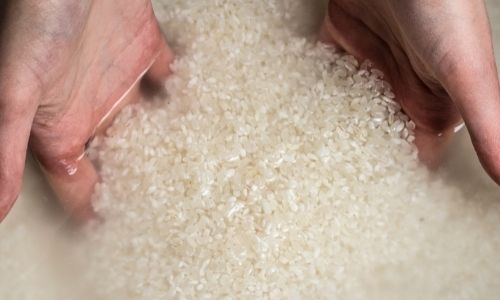
Soaking the rice in water before cooking can help to remove some of the starch. This will make the rice less likely to foam and bubble over. Soak the rice for 30 minutes to 1 hour before cooking. Remember this when soaking rice, the ratio of water to rice should be 2:1 because the rice will absorb some of the water.
4. Avoid overfilling the rice cooker
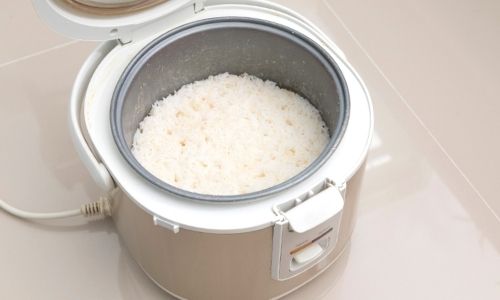
We recommend you use a 1:1 ratio of rice to water so that the rice has enough room to expand as it cooks. Make sure you don’t fill the pot to the very top. Leave a little bit of space at the top so that the water can boil without spilling over.
5. Use a pot with a wider diameter
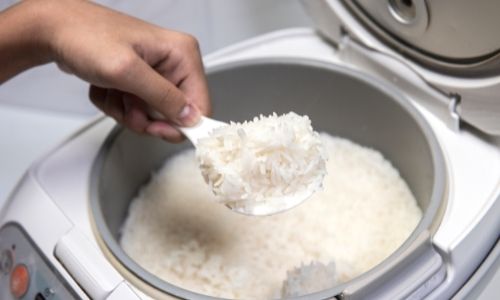
If you have a choice, use a pot with a wider diameter. This will give the water more surface area to evaporate, which will prevent it from overflowing. You can also try using a pot with a steam vent. This will allow the steam to escape and prevent the water from bubbling over.
6. Use the correct cooking setting
If your rice cooker has a ‘simmer’ or ‘low’ setting, use this instead of the ‘cook’ setting. This will prevent the water from boiling over. All kinds of rice can be cooked on the ‘simmer’ setting, so don’t worry about the rice not cooking properly.
7. Stir the rice occasionally
Stirring the rice occasionally will help to prevent the starch from settling on the bottom of the pot and forming bubbles. Be careful not to stir too much, as this can make the rice mushy.
Note: We recommend you put a lid on your rice cooker while stirring so that the steam doesn’t escape.
8. Add a little oil to the pot

Adding a little oil to the pot will help to prevent the water from boiling over. Just add a few drops of oil to the water before cooking. You can also try using butter or margarine.
9. Reduce the amount of water you use
If you’re using too much water, it can cause the rice to cook unevenly and make it more likely to foam and bubble over. So, make sure you use the correct amount of water. We recommend you use a 1:1 ratio of rice to water. However, make sure that you don’t use too little water, as this will make the rice dry.
10. Let the rice cooker cool down before opening it
If you open the rice cooker immediately after cooking, the steam will escape and cause the water to boil. So, let the rice cooker cool down for a few minutes before opening it. This will prevent the water from boiling over and making a mess.
FAQs
Is it normal for steam to come out of the rice cooker?
It is normal for steam to come out of the rice cooker as it is an indication of the process of cooking. The steam vent cap in your rice cooker will undoubtedly catch any foamy substances that come along with the steam.
What is the best water to rice ratio?
Rice and water should be taken in a 1:2 ratio. If you want firmer rice, you can decrease the proportion of water. Similarly, if you want mushy rice, you can increase the water content.
Why is my rice sticking to the rice cooker?
More often than not, rice sticks to the rice cooker due to the absence of a non-stick spray or water. You can use more water to prevent your rice from sticking to the bottom or the side of your rice cooker.
Conclusion
As you can see, there are a few reasons why your rice cooker may overflow. However, there is no need to worry, as this is quite normal. Just follow the tips mentioned above, and you should be able to prevent your rice cooker from overflowing.
Always remember to use the correct amount of water and stir the rice occasionally. With a little bit of practice, you’ll be able to cook perfect rice every time!



